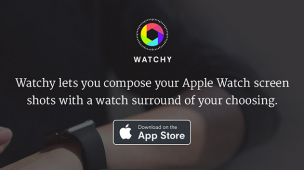I saw a few posts circulating on twitter recently, regarding facebook and the size of its mobile app downloads, with users making comparisons to other apps.
This got me thinking – as a user who has a lot of apps installed, how much bandwidth does my phone use to keep my apps updated?

I might not be your average user. As a director of a UX Design agency I download a lot of apps. When new apps come out I often install them just to see how the interface looks or a specific onboarding experience is achieved. It’s the best way to learn. Consequently I have just over 250 apps on my device. That may sound like a lot, but check yourself – you might be surprised how many you have installed today.
One Friday I turned off auto-update for apps and let the update queue build up for a week. The results shocked me.
The rules:
- Auto-update is off and no manual updates allowed until the weekly deadline
- Every week at 5pm on a Friday I document the update list then start the update process
- Do not uninstall any apps during this period
- Any new apps installed were excluded from the count
I continued the experiment for a total of 6 weeks. I’ll caveat that the results would look quite different if I had 6 months of data, but ain’t nobody got time for that, and the top-20 worst offenders would likely not change positions. The results would look most different at the low end where most app publishers are largely doing things right.
After the first week I had 7.59GB of updates to install, spread across 67 apps – averaging 113MB per app.
After 6 weeks of documenting app update sizes, the results were as follows…
Most regular updaters
4 apps updated their app every single week:
- Netflix
- UberEats
10 apps updated 5/6 weeks
15 app updated 4/6 weeks
34 apps updated 3/6 weeks
31 apps updated 2/6 weeks
56 apps updated 1/6 weeks
102 did not update during the test period.
The top 10 bandwidth hogs
- Facebook 1.88GB
- LinkedIn 1.57GB
- Uber 1.35GB
- iTranslate 1.26GB
- Airbnb 1.12GB
- Facebook Messenger 1.05GB
- Peak Brain Training 0.96GB
- Facebook Pages manager 0.96GB
- Microsoft Outlook 0.88GB
- Google Sheets 0.84
Top 3 bandwidth hogs by company
- Google 5.64GB
- Facebook 4.77GB
- Microsoft 2.39GB
There are apps here that didn’t update at all during this period, and you can’t judge all apps equally – some are exponentially more complicated than others and might have a large code base for good reason.
Also as a regular user I do appreciate that some companies have rapid iteration cycles, update regularly and fix bugs quickly. However at some point one does have to question whether a weekly release is always necessary, especially if your app weight is high. Many companies release updates based on their development sprint cycles, but they can wait – releasing every 3 or 4 sprints, or even waiting until there’s enough changes to warrant pushing an update.
To pick on one app and scale up the numbers
Let us assume LinkedIn is installed on 100 million devices (it states 50-100m on Android App Store alone), it updates every week with an average app update size of 261MB. Over the course of a year each user would download 13.5GB of updates for this one app alone, and across the 100 million users would equate to 162PB (Petabytes = 1,000 terabytes) of bandwidth for the planet to have an up to date professional networking mobile application. This seems somewhat excessive and I’m sure they could both optimise the app size and also not push quite so many minor and imperceptible changes on such a regular basis.
I don’t mean to single out LinkedIn too much, but there were one of the worst offenders in my data. The same could be said for 50 other apps on my phone.
Users bandwidth is not something to be treated lightly – all data is paid for, either on cellular or with wifi at home or at work. Data is not free and some companies play with it as if it is limitless. There is a cost, it’s just less tangible with digital products but it is a burden put on the user. The environmental impact alone due to energy and battery use must be large, especially when scaled across all apps globally.
If you don’t fix it, the platforms might
Clearly large apps sitting unused on device regularly updating in the background is an issue for many users – especially those who are constantly running into their device storage limits. Coming in iOS11 this year is a new feature that users can activate to automatically remove an app from your device if it sits unused. Your settings and data for that app persist, so if reinstalled you’ve not lost anything, but if enabled this feature will start automatically removing apps, freeing up space on users devices. We don’t yet know the logic for this algorithm but I can imagine it might take into account the app weight in it’s decision making process. Apple also launched App-Thinning via device target slicing and on-demand resources with iOS 9, but it’s hard to say how many developers go out of their way to use these techniques to improve their users experience with their apps.
Be a good app citizen
To be a good app citizen you must develop in a way that avoids bloated code where possible and only submit updates when there is clear user benefit to doing so. I know this sounds simple, and in practice is actually rather complicated, but the situation will only get worse unless it is addressed. We can’t rely on data network speed increasing and prices falling (although they hopefully will).
The best app citizens
Out of all the apps I captured during this period, there were some that seem to follow the rules of good-app citizenry. I’ve ignore apps that only updated once as it’s too shorter time scale to gauge if they do update with frequency or not. So focussing on the apps that updated twice, the smallest total downloads were:
- Just Press Record – 5.8MB
- Overcast – 37.4MB
- National Rail – 65.6MB
- Harvest – 66.6MB
- BBC News – 82.5MB
The first two were not surprising – indie apps by well known developers for doing things the right way. Just Press Record is a very simple app using external cloud storage systems, so the app weight can be light. Overcast is a podcast client – a more complex app, but the developer Marco Arment does things the right way; keeps his code base simple, efficient and with a minimal footprint. I was surprised to find the next three apps are made by larger companies. Despite my data set being relatively short it’s good to see large companies such as the BBC and National Rail keeping app weights low and updates frequent, but only as required.
When Every Interaction work on app projects, although we’re just designers and don’t do the development ourselves, we always emphasise the importance of being a good app citizen and are lucky enough to work with talented dev teams on our projects who recognise the importance of doing things well.
Make sure when you next work on an app, you do the same. If you’ve got a new app project and you’d like to speak to a user experience design agency about it, please get in touch.
Update 23rd June 2017
Several readers with more detailed knowledge wrote in to explain that App Thinning is indeed a thing widely used and the stated complete app bundle size is not actually what you download for each update. A communication issue perhaps Apple should address?
Matt Birchler did some tests of his own showing across the apps highlight below the range in download size can vary between 47-80% of the full bundle size. So we should expect a fair degree of thinning to take place. Even still, halving some of these app sizes creates alarming app weights, and doesn’t change the fact that you should take these factors into consideration and update only when necessary. Be a good app citizen! 
Credit to Matt Brichler for his research




